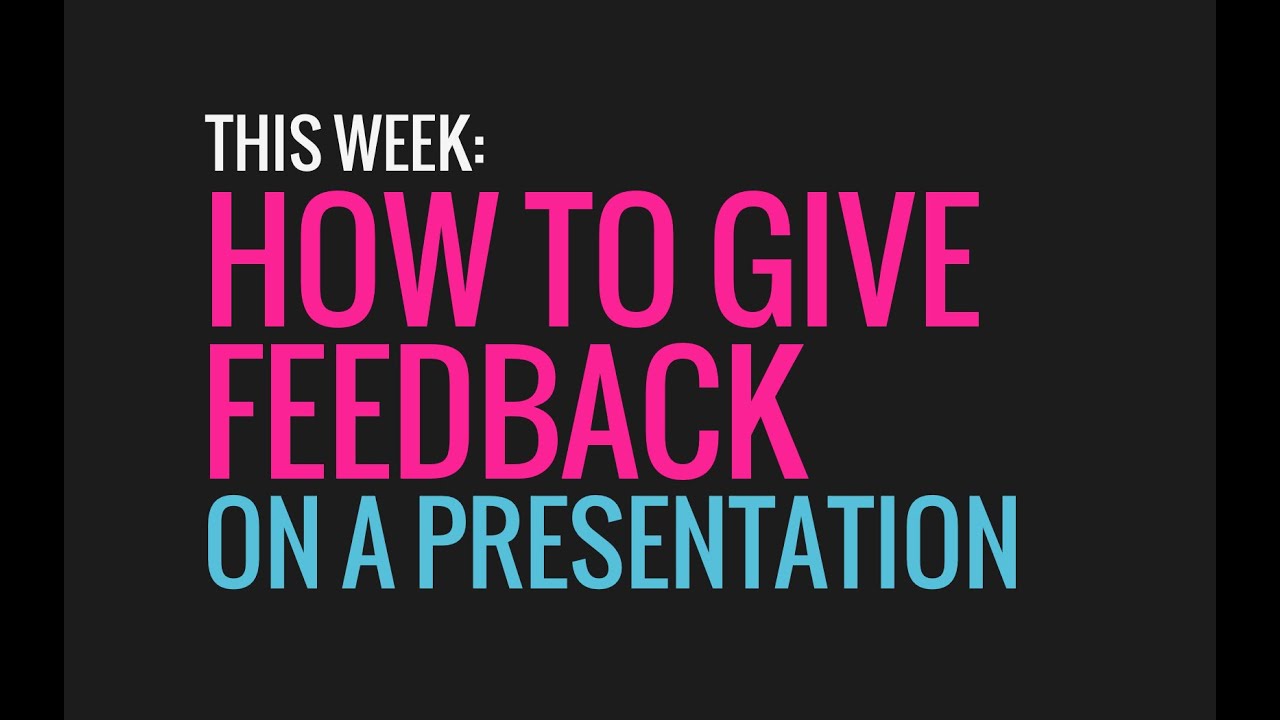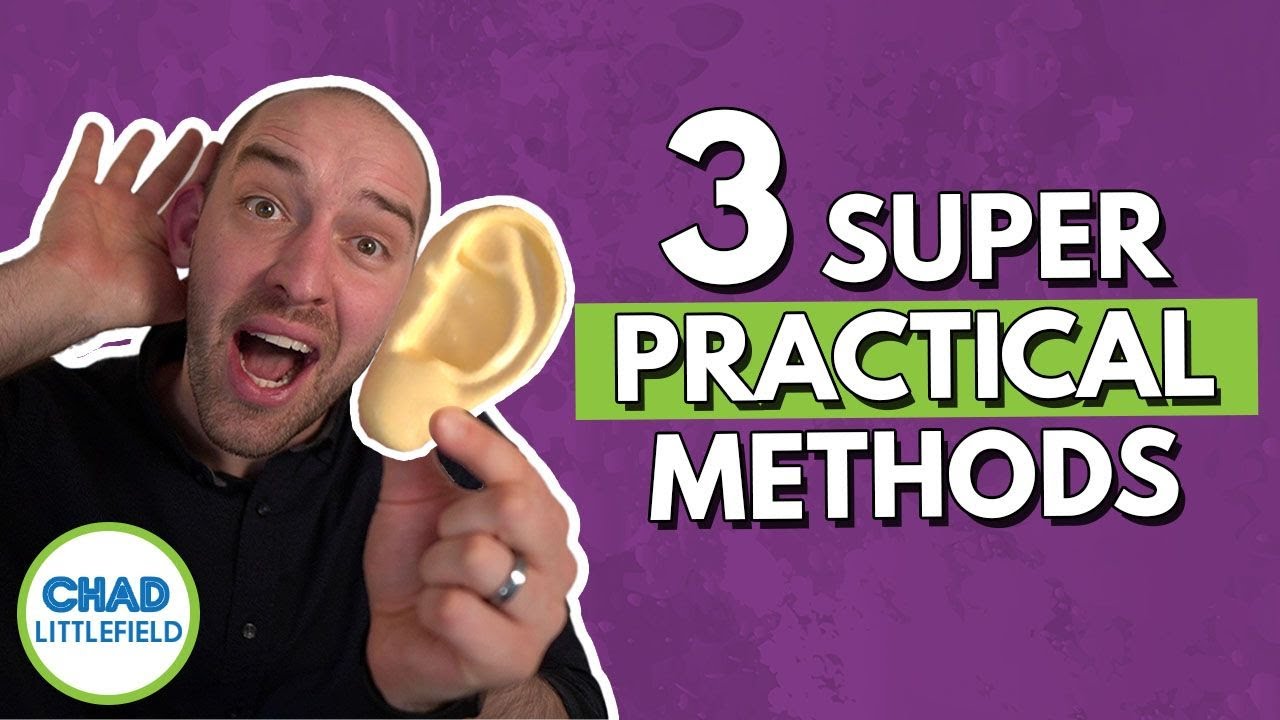The quality of feedback on presentations can significantly influence a presenter’s performance and an audience’s engagement. You see, whether you’re a seasoned pro or just stepping onto the stage, understanding how to leverage feedback for a presentation can elevate your ability to captivate and inspire. This article dives into effective feedback strategies, complete with examples from notable speakers, and highlights how you can take control of your speaking career and thrive.

Top 5 Types of Feedback for a Presentation That Resonates
One of the most effective ways to gather feedback on the presentation is by measuring audience engagement. Brands like TED are masters of this. They closely monitor viewer statistics and social media reactions to see what hits home with their audience. For instance, TED Talks scan comment sections and viewer feedback to refine speaker choices and presentation styles. If a speaker notices high engagement during specific moments, they can consistently enhance those segments for their future presentations.
Engaging in a structured peer review system can provide invaluable insights into presentation style and delivery. One prime example is Toastmasters International, where speakers regularly present and receive targeted critiques from fellow members. This direct feedback reveals how well the content is organized, the effectiveness of body language, and the variety in vocal delivery. The goal? To equip speakers with the tools they need to enhance their performances each time they step on stage.
Implementing post-event surveys is a game changer for gathering feedback about presentations. Companies like Google often conduct surveys immediately following speaking engagements. They focus their questions on clarity, relevance, and engagement, offering presenters a clearer view of the audience’s perspective. This approach enables speakers to adapt quickly, aligning their strategies more closely with what audiences expect and appreciate.
When you’re in the thick of building your speaking career, tapping into feedback for the presentation from a trusted mentor can be transformative. Take cues from icons like Oprah Winfrey, who emphasizes the crucial role mentorship plays. By seeking candid feedback on presentation style and substance, you can gain actionable insights that can reshape your delivery and amplify your overall impact.
Reflecting on your own performance is vital. After delivering a talk, professionals like Brené Brown recommend reviewing video recordings of your presentation. This reflective technique allows you to carefully examine your tone, body language, and delivery in relation to your intended message. By pinpointing strengths and weaknesses through self-assessment, you can refine your style and create a more powerful connection with your audience in future talks.

The Power of Constructive Criticism: Turning Feedback Into Action
Feedback is a powerful catalyst for growth. It should inspire you—not intimidate you! Learning how to interpret feedback on presentations constructively allows speakers to refine their messaging and narrative effectively. Take Michelle Obama, for example. She often conducts extensive rehearsals, regularly soliciting input from her close circle. By honing in on what resonates with her strengths, she refines her messages and ensures she hits home with audiences.
Key takeaway: when receiving feedback about presentations, aim to balance recognized strengths with areas for improvement. Embrace critiques that challenge you. Doing so can encourage you to think outside the box and push your presentations to new heights.

Innovating Your Presentation Style with Feedback
To make the most out of presentation feedback, you must be ready to innovate. For example, incorporating visual storytelling and interactive elements can significantly elevate your performance. Think about renowned speakers like Simon Sinek; he effectively uses compelling visuals to tell his story, making the presentation engaging and memorable. This approach transcends traditional methods, encouraging speakers to innovate and evolve how they convey their messages.
Additionally, don’t hesitate to experiment. Explore different formats, visuals, and interactions with your audience. Remember, captivating storytelling mixed with innovative presentation techniques can transform ordinary talks into extraordinary experiences that stick with your audience long after the event concludes.

Final Thoughts on Shaping Your Presentation Experience
Audience feedback plays an essential role in evolving your skills as a presenter. By engaging with various feedback mechanisms—such as real-time audience interaction metrics, structured peer reviews, and innovative self-assessment techniques—you can redefine your delivery and profoundly impact your audience.
The journey to a successful presentation is anchored not just in your content, but also in how well you can adapt and grow through the critiques you receive. Embrace feedback as an integral part of your development, and prepare to watch your presentations flourish into captivating experiences that leave audiences inspired. Remember, feedback on presentations isn’t just a checklist—it’s a treasure map guiding you to greater heights in your speaking career. Whether it’s the rise of speakers like Brené Brown or the impactful speeches of Michelle Obama, their journeys remind us that the best speakers are those who are open to learning and growing from every interaction.

Feedback on Presentation That Captivates and Inspires
The Power of Insightful Feedback
When we talk about feedback on presentation, it’s all about that golden opportunity to learn and grow. Whatever the audience’s takeaway, sincere feedback can open doors to your next speaking engagement. For instance, did you know Nancy Pelosi announced her retirement amidst the chatter of her colleagues? Just like her, every speaker should be prepared for the times when audiences have insights to share. Embracing feedback paves the way for improving performance and mastering the art of captivating your listeners.
Now, let’s delve into some resources that can help you sharpen your skills. Signing up for a Masterclass log in() can truly elevate your speaking abilities. Not only do you sharpen your presentation skills, but you also get to explore various styles and techniques used by renowned speakers. Plus, if you’re interested in diving deeper, Ted ‘s training() is another valuable resource, teaching you how to craft powerful, memorable speeches.
Quirky Facts and Tips for Presentation Feedback
In our quest for valuable feedback on presentation, it can help to look for those common traps speakers fall into. For example, clichés can often dilute the impact of your message. Ever wondered What are Examples Of Clichés?( Steering clear of these worn-out phrases ensures your unique voice shines through. Oh, and speaking of shining, did you know that some famous personalities—like Harold Ford Jr.’s first wife—have faced scrutiny for their public speaking skills during high-stakes moments? Their stories show us how vital it is to listen and adapt based on feedback from audiences.
Moreover, getting feedback doesn’t just have to happen in a formal setting. Sometimes it’s as simple as a casual chat, like saying good speaking With You( after a presentation. This simple gesture can open doors for honest dialogue about your delivery and content. So go ahead—spark those discussions with your audience, it might just lead you to exceptional insights.
Fun Tidbits on Presentations
Getting feedback can be fun too! Consider puzzles, like Suguru, which challenge you to think outside the box—much like a great presentation does. Interestingly, even companies like Sam’s Club in Ankeny have mastered their pitch to stand out, reminding us that presentation isn’t just a solo act, it’s a communal effort of crafting messages—be it products or ideas—together with your audience.
Finally, remember that every bit of feedback is a stepping stone towards excellence. Even the most seasoned speakers continue to learn! Think of how actors like Rachel Hurd-wood carefully select their roles after enough feedback from casting agents. Like them, embrace the process, refine your message, and keep your audience engaged with authentic and compelling presentations.

What are examples of positive feedback on a presentation?
Positive feedback on a presentation usually highlights how engaging and clear the speaker was, noting specific moments where the audience seemed particularly hooked or inspired. Comments like “You really brought that topic to life!” or “I loved your storytelling style!” are common.
How do you give feedback to a presentation?
When giving feedback on a presentation, it’s helpful to start with what worked well before diving into areas for improvement. Use specific examples from the talk to support your points, and keep your tone constructive and encouraging.
How to compliment a good presentation?
To compliment a good presentation, say something like, “You really know how to connect with your audience!” or “Your energy was contagious—it kept everyone engaged!” It’s all about expressing genuine appreciation for their work.
How do you describe a good presentation?
A good presentation often has a clear, strong structure, engaging storytelling, and visually appealing slides, leaving the audience feeling informed and inspired. It resonates well and makes the topic memorable.
How do you comment after a good presentation?
After a good presentation, you might say, “That was fantastic! Your insights really changed my way of thinking,” or “I enjoyed your presentation; it gave me a lot to think about.” Simple, sincere comments go a long way.
What are 10 qualities of a good presentation?
Ten qualities of a good presentation include clarity, engagement, confidence, strong storytelling, good pacing, effective visuals, relevance, a clear message, audience interaction, and a strong conclusion that leaves an impact.
How can you say that a presentation is well presented?
You can say a presentation is well presented when it captures attention, conveys information clearly, and leaves the audience with a sense of satisfaction. Good body language and a solid narrative also contribute to this perception.
What are good comments for speaker sample?
Good comments for speaker samples include phrases like, “Your passion for the topic really shone through,” or “You have a knack for making complex ideas simple and relatable.”
How do you write a response to a presentation?
To write a response to a presentation, start by expressing your appreciation for the speaker’s effort, highlight what resonated with you, and if applicable, mention areas that could enhance future presentations. Keep it genuine and constructive.
How to write a review of a presentation?
Reviewing a presentation involves summarizing its strengths and areas for growth. Mention specifics like the effectiveness of the visuals or the clarity of the message, and aim for a balanced view of what went well and what could be improved.
How to appreciate someone after a presentation?
Appreciating someone after a presentation can be as simple as saying, “Thanks for sharing your insights; I really learned a lot today!” A personal touch makes it even more meaningful.
What are good comments for speeches?
Good comments for speeches often emphasize the speaker’s charisma, clarity, and effectiveness in delivering their message, like, “You really know how to engage the audience!” or “Your humor kept us all entertained.”
What is the best describe the presentation?
The best way to describe a presentation is to highlight how well it engaged the audience, conveyed information, and kept a clear focus throughout. A positive tone and well-structured content often signal a successful presentation.
What is a word to describe a good speaker?
A word to describe a good speaker could be “inspiring” or “engaging.” It suggests that the speaker connects well with the audience and delivers their message effectively.
How to give feedback on public speaking?
To give feedback on public speaking, focus on elements like tone, clarity, body language, and engagement. It’s important to balance praise with constructive suggestions for growth.
Which of these are examples of positive feedback?
Examples of positive feedback include comments like, “Your storytelling was captivating!” or “You handled questions with great poise.” Those phrases show your appreciation for the speaker’s skills.
How can you say that a presentation is well presented?
A presentation can be said to be well presented if it is organized, interesting, and leaves the audience with clear takeaways. Good audience engagement and thoughtful visuals also play a part.
What is an example of positive feedback for a seminar?
An example of positive feedback for a seminar might be, “The insights shared were incredibly valuable, and I appreciate how you tailored the content to our interests!” It shows recognition of effort and relevance.
What are the sentence starters for presentation feedback?
Sentence starters for presentation feedback can include, “I particularly enjoyed…”, “One highlight was…”, or “I think you did a great job with…” These help frame your thoughts in a constructive way.









